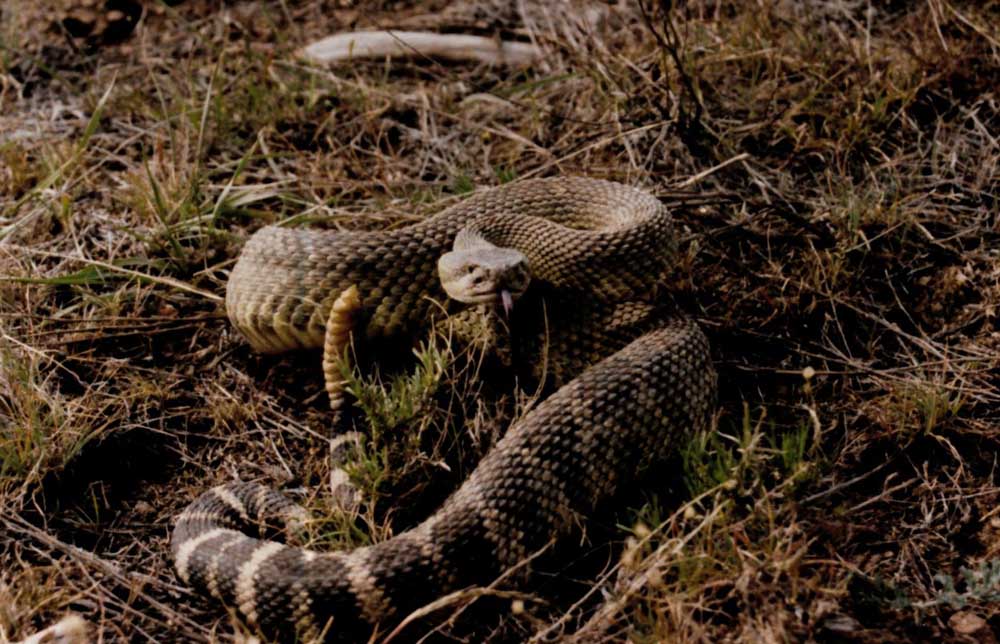Spring is rattlesnake hunting time
Published 1:15 pm Tuesday, May 7, 2019

- A northern Pacific rattlesnake coiled and ready to strike.
Springtime is rattlesnake hunting season for Bob Steinbruck.
That’s when the snakes come out of their dens to warm themselves on rocks and are more visible, he said.
Steinbruck has been hunting rattlesnakes for 45 years. His interest was sparked during a hunting trip in the Owyhee Reservoir area.
“We caught some snakes and ate them for a lark,” he said.
Steinbruck, who recently moved to John Day, said he knows of 20 dens in the Bend area. He found about 500 snakes last year.
Finding dens isn’t easy. Sometimes he returns multiple times to a site where he’s spotted about five snakes sunning themselves on a rock before he’s sure.
About 200 rattlesnakes can live in a single den, he said. Typically they’re located on a south-facing slope with broken rock. Large rocks take longer to warm up after a chilly night, he said.
Grant County is home to Great Basin and northern Pacific rattlesnakes. The more aggressive western diamondbacks are found in Texas and Arizona, and timber rattlers are found east of the Mississippi River, he said.
Rattlesnakes eat mice, rats and small birds, and outbuildings or lumber piles can provide good hunting grounds. But a rattlesnake’s den could be a mile away on the rimrocks above a ranch, he said.
If someone asks him for assistance with a rattlesnake problem, Steinbruck heads up to the rocky slopes and looks for skins. Rattlesnakes shed their skin once a year, including the rattle.
Venom from rattlesnakes is definitely dangerous, he said. Most people who get bit don’t die, but it depends on a person’s health and age. Emergency kits today include better suction devices to remove venom from bites, he said, but people should seek medical attention as soon as possible.
“It’s easy to say, but don’t get excited, just get in your vehicle and drive to get help,” he said.
Most people who get bit were careless when handling rattlesnakes, Steinbruck said. Snakes are conservative about using up their venom, so many strikes are “dry bites” with no venom. Antivenom is available for sale, but it can be expensive, he noted.
Steinbruck has no professional training, but he reads about them and he’s tested rattlesnakes in the field. Rattlesnakes are deaf but acute to vibrations in the air and ground. He found he could sneak up on snakes by moving slowly and carefully, but the same snakes would start rattling if he approached quickly.
Herpetologists testing rattlesnakes in laboratories found their eyesight was generally limited to about 15 feet. Steinbruck said he tested that finding by wearing either dark or white shirts. The white shirt reflected more light and set the snakes to rattling more easily, he said.
To make up for bad eyesight, rattlesnakes boast heat-sensing pits between their eyes and nostrils. These enable rattlesnakes to hunt at night, Steinbruck said.
“When they strike a mouse and release venom, they immediately let go and then track the mouse for a short distance,” he said. “If they hold onto the mouse, it might turn and bite them back.”
Rattlesnakes swallow animals whole, headfirst. They have a tube in the bottom of their jaw which allows them to breathe while consuming the animals.
Female rattlesnakes give birth to half a dozen live snakes at a time around September. The young snakes come “fully equipped,” Steinbruck said, but while they are more feisty than adults, they have less venom.
Steinbruck used to catch snakes by hand — when he was much younger. He uses snake tongs now. Most people kill rattlesnakes by shooting them with a .22 or shotgun, cutting off their heads with a shovel or bludgeoning them with a stick.
“They’re pretty thin skinned,” he said.
Steinbruck said people wanting assistance finding dens or handling problems can contact him at 541-508-9332.





